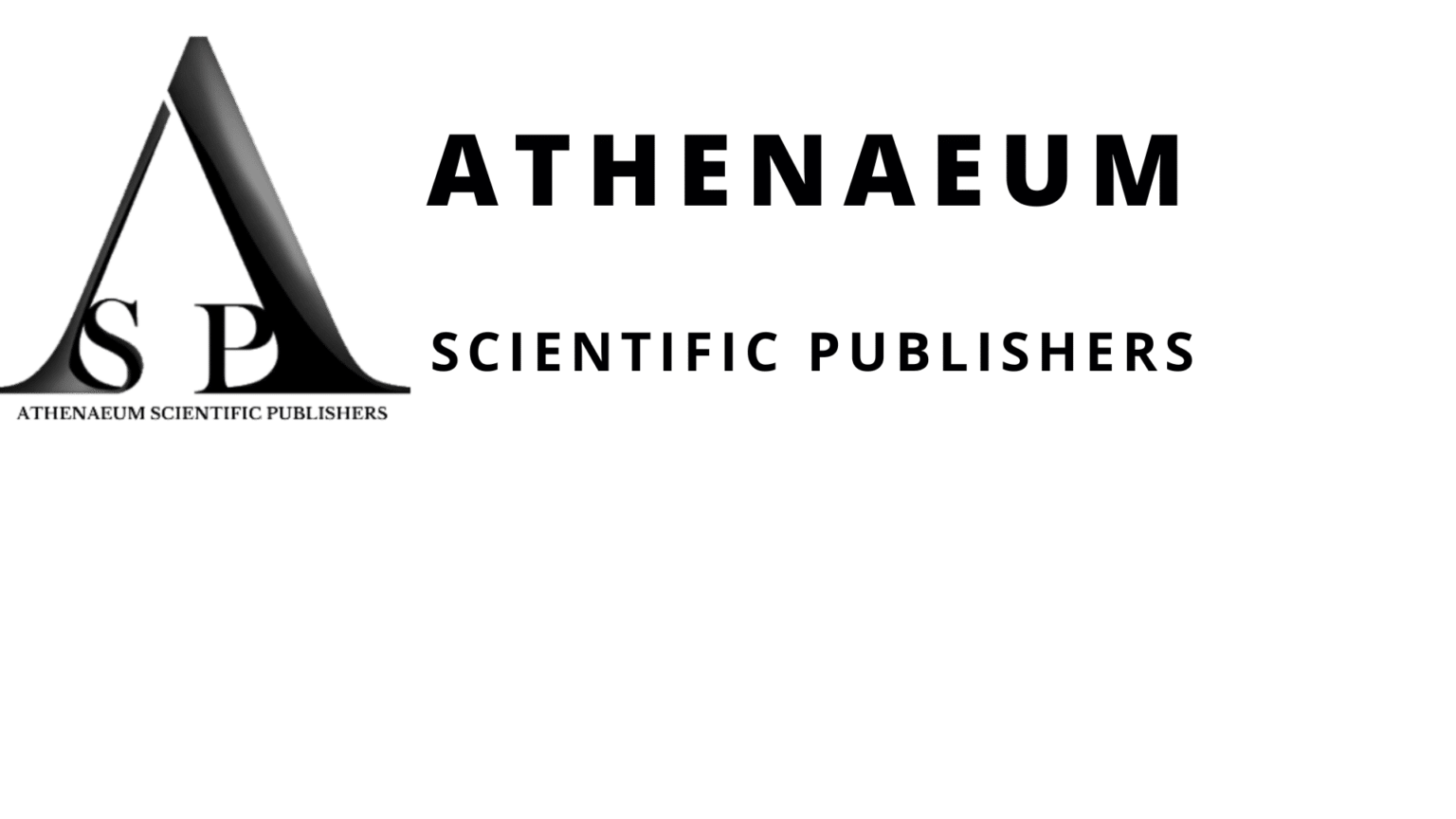Nillotpol Kashyap,1*, Shreya Rani2, Nishi Singh3, Soni Patel2
1Professor, Department of Pedodontics, Vananchal Dental College and Hospital, India
22nd Year PG Student, Department of Pedodontics, Vananchal Dental College and Hospital, India
31st Year PG Student, Department of Pedodontics, Vananchal Dental College and Hospital, India
*Corresponding Author: Nillotpol Kashyap, Professor, Department of Pedodontics, Vananchal Dental College and Hospital, India; Email: [email protected]
Published Date: 22-06-2022
Copyright© 2022 by Kashyap N, et al. All rights reserved. This is an open access article distributed under the terms of the Creative Commons Attribution License, which permits unrestricted use, distribution, and reproduction in any medium, provided the original author and source are credited.
Abstract
Gingival and periodontal ontal disease are seen in children at various stages of their growth period. Although gingival diseases are fairly common in children it is the opposite for periodontal diseases. Periodontal diseases are fairly uncommon in children and can be seen only if the children are suffering from some syndromes or genetical anomalies like Chediak Higashi syndrome, leucocytic adhesion defect etc. Gingival diseases can occur due to improper maintenance of oral health or during puberty in girls. Gingival diseases may have other causes like viral, bacterial, drug induced etc. This review article is an attempt to exlain the causes of gingival and periodontal diseases and their proper management in the dental clinic.
Keywords
Gingival Diseases; Plaque; Children; Anti-Epileptic Drugs
Introduction
Periodontal diseases are mostly seen in the adult population. However, it is not uncommon to see periodontal diseases in children and adolescents. Many rapidly destructive periodontal diseases can be seen in children in whom certain syndrome are present [1]. The importance of early diagnosis and early treatment of periodontal diseases in children cannot be emphasized enough because the prevalence and the severity periodontal diseases. Any incipient periodontal diseases in children can acquire a more aggressive form once they become adult. Hence children who are at risk of developing periodontal disease should be identified in the population and provided early treatment so as to stop the periodontal disease from taking a severe form. This review aims to identify the different periodontal disease that are seen in children and adolescent and also include various techniques of diagnosis and management of periodontal diseases that are seen in children and adolescents. These are the types of gingival and periodontal diseases that are generally seen in children and adolescents.
Gingival Diseases
Plaque-Induced Gingivitis
Almost 70% of children, less than 7 years old suffer from plaque- induced gingivitis [2]. This type of gingivitis is usually related to poor oral hygiene; presence of Pp Gingivalis is another factor that is associated with this type of gingivitis. In a study done by White 2006, it was found that about a third of 5-year-olds two third of 8 to 12 years old and half of 15-year-old suffered from gingivitis [3].
Eruption Gingivitis
This type of gingivitis is usually seen in an erupting tooth. This is due to plaque accumulation around the erupting teeth due to the host feeling uncomfortable in brushing the tender area around the tooth. The main clinical sign is that of redness around the gingiva since the gingival margin has not yet keratinised and sulcus development is incomplete [4].
Pubertal Gingivitis
This type of gingivitis is generally seen in 9 to 14 years of age as the Child matures [4]. This is due to the fluctuation of hormonal levels during puberty. These alteration in hormonal level result in modified gingival inflammatory response to dental plaque [5,6].
Drug Induced Gingivitis
This type of gingivitis is seen in children taking anti-epileptic drugs like Phenytoin and other drugs such as cyclosporine and calcium channel blockers.
Non-Plaque Induced Gingivitis
Sometimes gingivitis may appear as a manifestation of some systemic diseases due to bacterial or viral factors, trauma or due to some genetic phenomenon.
|
Aetiology |
Specific Cause |
Name of Condition/Lesion |
|
Infectious lesions |
Fungal Viral Deep mycoses |
Candidiasis Linear Gingival Erythema Herpangina Hand, Foot and Mouth disease, Herpes Simplex I (primary) Herpes Simplex I (secondary) Molluscum Contagiosum Aspergillosis Blastomycosis Cryptococcosis Histoplasmosis Geotricosis |
|
Trauma |
Thermal Chemical Physical |
Burns Ulceration Gingivitis artefacta |
|
Drug-induced |
Immune complex reaction Pigmenting drugs Anti-retroviral drugs Cytotoxic drugs |
Erythema multiforme Lichenoid drug reactions Hydroxychloroquine Doxycycline Oral Contraceptives Antimalarials Anti-HIV Drugs (VII nerve neuropathy) Methotrexate |
|
Systemic diseases that manifest within the gingiva |
Haematological disease Benign condition Malignant condition Granulomatous inflammation Immunological condition |
Agranulocytosis Cyclic Neutropenia Familial Benign Neutropenia Myeloid leukaemia B-cell Lymphoma Hodgkin’s Lymphoma Crohn’s Disease Sarcoidosis Melkersson-Rosenthal syndrome Wegener’s Granulomatosis Tuberculosis Disseminated Pyogenic Granulomata Hypersensitivity Reactions Lichen Planus C1-esterase Inhibitor Deficiency/ Dysfunction (angioedema) |
|
Genetic conditions |
Fibromatosis Anatomical variation |
Hereditary Gingival Fibromatosis Delayed Gingival Retreat Coeliac Disease |
Table 1: Non plaque induced gingival lesions [7].
Chronic Periodontitis
Although chronic periodontitis is only seen in adult it can begin in teenager as mild gingivitis and progress to chronic periodontitis. Hamlet and Clerehugh reported the presence of T. forsythia with clinical attachment loss of more than 1mm in 14 years old respectively (Fig. 1).

Figure 1: Chronic periodontitis.
Aggressive Periodontitis
This type of gingivitis is seen mostly in children and some adolescent. The amount of destruction of periodontal tissue is inconstantly proportional to the amount of microbial flora. There are elevated levels of A actinomycetemcomitans and P gingivalis, phagocytic abnormally and also elevated level of prostaglandin E2 and interleukin 1ß.
Localised Aggressive Periodontitis
This type of periodontitis is seen at puberty. The main characteristics of this type of periodontitis is loss of attachment on at least two permanent teeth, one of which is molar and the other being an incisor. There is an increased response of immunoglobulin G2 to the presence of A Actinomycetemcomitans. According to Haubek a highly toxic clone of Aa Actinomycetemcomitans has been to be main aetiology entity behind aggressive periodontitis (Fig. 2) [8].

Figure 2: Localised aggressive periodontitis.
Generalised Aggressive Periodontitis
Adolescent and young adults are the main victim of this type of periodontitis but it can be seen at any age group. This form of periodontitis usually affects the whole dentition. Attachment loss can be seen in at least three permanent teeth other than first molars and incisors. There is generally weak host response to infecting agents (Fig. 3) [7].
Periodontitis as a Manifestation of Systemic Diseases
These forms of periodontitis are generally seen more often in children than in adults. They occur both in localised and generalised form.
Necrotising Ulcerated Gingivitis
This form of gingivitis is seen as a manifestation of diseases like HIV, immunosuppressed host, malnutrition, lack of sleep, smoking etc. The clinical features include necrosis of interproximal areas presence of ulcers with pseudomembranous fetor orris, pain and bleeding. There are elevated level of P intermedia and Sspirochetes [9]. Generally, children will complain of pain and burning sensation while eating and have halitosis.
This form may progress to acute necrotising ulcerated periodontitis, although this is uncommon in children. The features of ulcerated periodontitis are necrosis of gingival tissues periodontal ligament and alveolar bone loss.

Figure 3: Generalised aggressive periodontitis.
Periodontitis Seen In Children Suffering From Syndromes [10]
Rathbun’s Syndrome (Hypophosphatasia)
It is a genetic disorder a can be divided into four groups prenatal, infantile, childhood and adult. The main aetiological factors are thought to be defective or deficient serum alkaline phosphatase. The earlier the onset of the disease the more severe it is. Clinical features include premature loss of deciduous teeth, abnormalities of bone, bleeding through new natural teeth. In milder form it is characterised by the loss of lower incisors, abnormal pulp chamber and abnormal cementum.
Leukocyte Adhesion Defect (LAD)
It is an autosomal recessive defect characterised by pre-pubertal aggressive periodontitis. There is poor leukocytic adhesion due to defective leukocyte surface glycoprotein. It is characterised by skin, respiratory, ear and soft tissue destruction. There is early loss of deciduous teeth due to rapid attachment loss and bone destruction just after eruption.
Papillon LeFevre Syndrome
It is a genetic disorder characterised by Palmar and plantar hyperkeratosis. There is premature loss of both primary and permanent teeth due to attachment and bone loss. Polymorph neutrophil chemotaxis and phagocytosis is defective. The main positive factor is A. actinomycetemcomitans (Fig. 4).

Figure 4: Papillon LeFevre syndrome [11].
Chedi ‘Ak Higashi Syndrome
It is an autosomal recessive disorder characterised by oculocutaneous albinism, photophobia, nystagmus and peripheral neuropathy. Monocytes defects and large granules in granulocytes are seen. Orally gingivitis and periodontitis are seen. There is tooth loss due to attachment and bone loss.
Down’s Syndrome
This disease is also known as trisomy 21. There is loss of primary and permanent teeth with the lower incisors being more effective. This is due to the poor vascularisation of the gingival tissues. Elevated level of A actinomycetemcomitans is generally seen in the subgingival plaque of children suffering from Down’s syndrome.
Management of Children and Adolescents with Parental Disease
- History
A detailed medical and dental history should be recorded from the children’s caretaker
- Examination
A detailed examination of soft and hard tissue should be done. Any ulceration or colour changes should be noted down. Predisposing factors like mouth breathing, sub or supra gingival calculus, loss of attachment pocket, overhanging restorations, malocclusion, incompetent lips etc should be noted down. Radiographs should be taken to know the status of periodontal complex [12].
- Diagnosis
In order to arrive at the correct diagnosis history taking clinical examination is important. Classification of the type of periodontal disease is important. Special test like pulp vitality test and antibiotic sensitivity test are important [13]
- Treatment plan
It includes the following:
- Initial Therapy: Patient and patient’s caretaker education and motivation regarding maintenance of oral hygiene falls under it. Administration of local and systemic antibiotics like tetracycline, doxycycline, metronidazole combination of metronidazole and amoxicillin combination of metronidazole and augmentin (amoxycillin clavulanic acid) is done in case of aggressive periodontitis.This is followed by evaluation of patient’s response to initial therapy
- Corrective Therapy: It includes
- Oral prophylaxis, scaling and root planning in cases where there is subgingival and super gingival plaque
- Surgical removal in cases of gingival overgrowth.
- Laser therapy also in cases of gingival overgrowth
- For regeneration of the periodontium stem cell collected from exfoliated deciduous teeth, orthodontically extracted teeth can be used
- Supportive Therapy: It includes recall of patient to maintain the oral health of gingiva and their periodontium
- Referral: In case where the patient requires multidisciplinary care referral to specialists should be done
- Steps in prevention of periodontal diseases in children an adolescence
Education: Children and their parents should be educated regularly maintenance of oral hygiene by the dentist. They should be educated about the dental caries, periodontal disease and there sequalae. Pregnant mothers should also be educated about the importance of oral hygiene and prevention of periodontal diseases to decrease the incidence of pre-term low weight of babies - Tooth brushing: Parents should be taught to start tooth brushing as soon as the first teeth erupt in their child’s mouth. Although the Phones technique is preferable, children should be taught to brush all the surface of the teeth efficiently
- Flossing: Children should be taught to floss their teeth regularly to prevent interproximal caries
- Mouth rinses: It can be used as in at junk to tooth brushing and flossing. Chlorhexidine containing mouthwashes has been found to be effective against a variety of bacteria. Ethanol containing mouthwash is not recommended in children
- Regular professional intervention: Parents should visit a dentist along with their children every six months for check-up an to remove calculus and plaque and decrease the changes in periodontal disease from occurring
Conclusion
Although periodontitis is not regularly seen in children, its occurrence or premature exfoliation of teeth or mobility should be taken as an early sign of underlying systemic condition. Early detection of periodontal disease can unearth the underlining cause and hence can provide optimum outcome of the treatment provides.
Conflict of Interest
There are no conflicts of interest.
References
- Siddharth M, Singla A, Kaur S. Periodontal diseases in children andand adolescents – a review. JOHR. 2013;4(1):18-23.
- Califano JV. Position paper: Periodontal diseases of children and adolescents. J Periodontal. 2003;74:1696-1704.
- Morinushi T, Lopatin DE, Vvan Poperin N, Ueda Y. The relationship between gingivitis and colonization by Porphyromonas gingivalis and Actinobacillus actinomycetemcomitans in children. J Periodontal. 2000;71:403-9.
- Bimstein E, Matsson L. Growth and development considerations in the diagnosis of gingivitis and periodontitis in children. Pediatr Dent. 1999;21:186-91.
- De Pommereau V, Dargent-Par C, Robert J, Brion M. Periodontal status in insulin-dependent diabetic adolescents. J Clin Periodontal. 1992;19:628-32.
- Nakagawa S, Fujii H, Machida Y, Okuda K. A longitudinal study from prepuberty to puberty of gingivitis. Correlation between the occurrence of Prevotella intermedia and sex hormones. J Clin Periodontal. 1994;21:658-65.
- Clerehugh V, Kindelan S. Guidelines for periodontal screening and management of children and adolescents under 18 years of age. BSP and BSPD. 2012;1-25. (bsperio.org.uk)
- Haubek D, Ennibi OK, Poulsen K, Vaeth M, Poulsen S, Kilian M. Risk of aggressive periodontitis in adolescent carriers of the JP2 clone of Aggregatibacter (Actinobacillus) actinomycetem-comitans in Morocco: a prospective longitudinal cohort study. Lancet. 2008;371:237-42.
- American Academy of Periodontology. Periodontal diseases of children and adolescents Reference Manual. 2004;34(6):304-11.
- Damle SG. Textbook of paediatric dentistry. 5th India: Aarya publishing House. 2017.
- Patel S, Rani S, Kashyap N. A unique case report of papillon LeFevre syndrome in a 13-year-old child. J Dental Sci Res Rep. 2022;4(2):1-3.
- Clerehugh V, Tugnait A. Diagnosis and management of periodontal diseases in children and adolescents. Periodontal. 2001;26:146-68.
- Oh T, Ebar R, Wang H. Periodontal diseases in the child and adolescent. J Clin Periodontal. 2002;29:400-10.
Article Type
Review Article
Publication History
Received Date: 24-05-2022
Accepted Date: 14-06-2022
Published Date: 22-06-2022
Copyright© 2022 by Kashyap N, et al. All rights reserved. This is an open access article distributed under the terms of the Creative Commons Attribution License, which permits unrestricted use, distribution, and reproduction in any medium, provided the original author and source are credited.
Citation: Kashyap N, et al. Gingival and Periodontal Diseases Seen in Children and Adolescents: A Review of Literature. J Dental Health Oral Res. 2022;3(2):1-9.
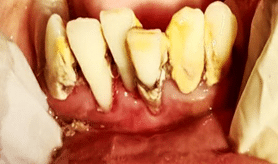
Figure 1: Chronic periodontitis.
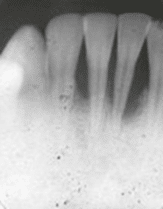
Figure 2: Localised aggressive periodontitis.
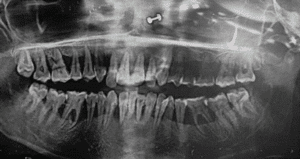
Figure 3: Generalised aggressive periodontitis.
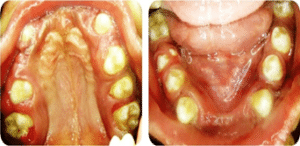
Figure 4: Papillon LeFevre syndrome [11].
Aetiology | Specific Cause | Name of Condition/Lesion |
Infectious lesions
| Fungal
Viral
Deep mycoses
| Candidiasis Linear Gingival Erythema Herpangina Hand, Foot and Mouth disease, Herpes Simplex I (primary) Herpes Simplex I (secondary) Molluscum Contagiosum Aspergillosis Blastomycosis Cryptococcosis Histoplasmosis Geotricosis |
Trauma
| Thermal Chemical Physical | Burns Ulceration Gingivitis artefacta |
Drug-induced
| Immune complex reaction
Pigmenting drugs
Anti-retroviral drugs Cytotoxic drugs | Erythema multiforme Lichenoid drug reactions Hydroxychloroquine Doxycycline Oral Contraceptives Antimalarials Anti-HIV Drugs (VII nerve neuropathy) Methotrexate |
Systemic diseases that manifest within the gingiva | Haematological disease Benign condition
Malignant condition
Granulomatous inflammation
Immunological condition
| Agranulocytosis Cyclic Neutropenia Familial Benign Neutropenia Myeloid leukaemia B-cell Lymphoma Hodgkin’s Lymphoma Crohn’s Disease Sarcoidosis Melkersson-Rosenthal syndrome Wegener’s Granulomatosis Tuberculosis Disseminated Pyogenic Granulomata Hypersensitivity Reactions Lichen Planus C1-esterase Inhibitor Deficiency/ Dysfunction (angioedema) |
Genetic conditions
| Fibromatosis Anatomical variation | Hereditary Gingival Fibromatosis Delayed Gingival Retreat Coeliac Disease |
Table 1: Non plaque induced gingival lesions [7].

